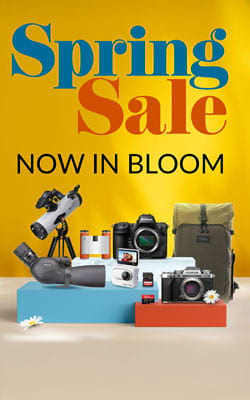Use Canon 50mm 1.8 lens' like a Pro
Want to know how to use Canon 50mm f1.8 lens’ to their full capacity? You’re in the right place.
It's a time-old adage that constraints can boost creativity, and prime lenses are a great way to narrow your creative options while guaranteeing sharp images.
A prime lens gives a fixed composition that you can keep in mind as you think about framing. This gives you a puzzle to solve in how to capture something and makes you choose what's important in your shot, ultimately making you focus on the shot for that sense of satisfaction when you think up a new framing option that works.
50mm lenses like the Canon RF 50mm F1.8 STM lens and Canon EF 50mm f1.8 STM lens are designed for use with full-frame cameras from Canon, differing slightly in their features and compatible camera systems. We have broken this down further in our ‘Overview of Features: Canon 50mm’ article.
Why buy a ‘nifty fifty’?
With this 50mm STM lens, Canon has made a premium fixed lens to feature as a staple in your go-to photography kit, and while the gear doesn’t make the photographer, it certainly helps build their experience. You may even find the limitations allow you to learn more about focal length, FOV and shooting distance with the 50mm than with a zoom. Ultimately both zooms and primes are key to a well-rounded kit, each changing the way you approach a situation.
While something like a 35mm may be preferred as a general-purpose lens, with the 50mm feeling a little tight for general use, the nifty fifty is a fantastic lens for portraits and candids, especially when you want that extra reach for shots of people.
A blank canvas
You can think of the fixed focal length as a set canvas size for your image. Shooting in this focal length with repetition will help you learn what works well and what doesn’t fit in the frame. Generally, 50mm lenses are considered perfect for creative portraits and low-light photos and ideal for the everyday shooter. Besides anything else, the 50mm is a great lens to carry around with you, it has plenty of versatility in what it can shoot and won’t weigh you down too much, so you can get a full day's worth of shooting in.
While a zoom lens may offer a breadth of focal lengths in one, sometimes too much choice will paralyse you creatively. And ultimately, you can cover a broad range of distances with two or three zoom lenses, giving you ample space in your photography kit to add a specialist focal length, whether it be for portraiture like a 50mm F1.8 lens allows, or close-up shots with a Canon RF 100mm F2.8L MACRO IS USM Lens.
Master light
Sharp and clean, the 50mm prime with a f1.8 aperture is a great way to capture bright portraits with super-sharp image quality.
This inability to zoom forces you to become more invested in the shots you are taking. You will find the lens’ wide aperture works in tandem with the prime 50mm focal length to emphasise the effect of various elements of exposure, pushing you to seek out new angles from which to shoot.
There is no better way to learn how to use available light to its full potential than with a wide-aperture lens; you will rarely need to supplement the environment’s light with an on-camera flash or external speedlight.
F/1.8 is fast!
The f1.8 aperture will allow you to capture moments in a fraction of the time. A zoom lens simply can’t compete for speed, sharpness and lack of distortion in your images. Plus, with your focal length already set, taking your shot can be near-instant.
Fast primes can perform well for portrait work, isolating your subject using the aperture alone, and the 50mm f/1.8 is a great performer in low light conditions.
Learning focus
A nifty fifty pushes you to understand the shallower depth of field and plane of focus that is key in using wide-aperture lenses. Plus, the STM technology allows for silent focusing, which can otherwise be distracting in portrait work.
Portability
The process of shooting handheld often feels less restrictive and allows for a freer creative workflow, making the lightweight 50mm an extremely valid option.
If you’re seeking more of a versatile focal length for active shots then I’d suggest the Canon RF 24-70mm f2.8 L IS USM Lens which has a low aperture and image stabilisation, but for the price, the 50mm f1.8 gets you a narrow depth of field on the cheap and is pretty sharp at F2 or 2.8.





























































